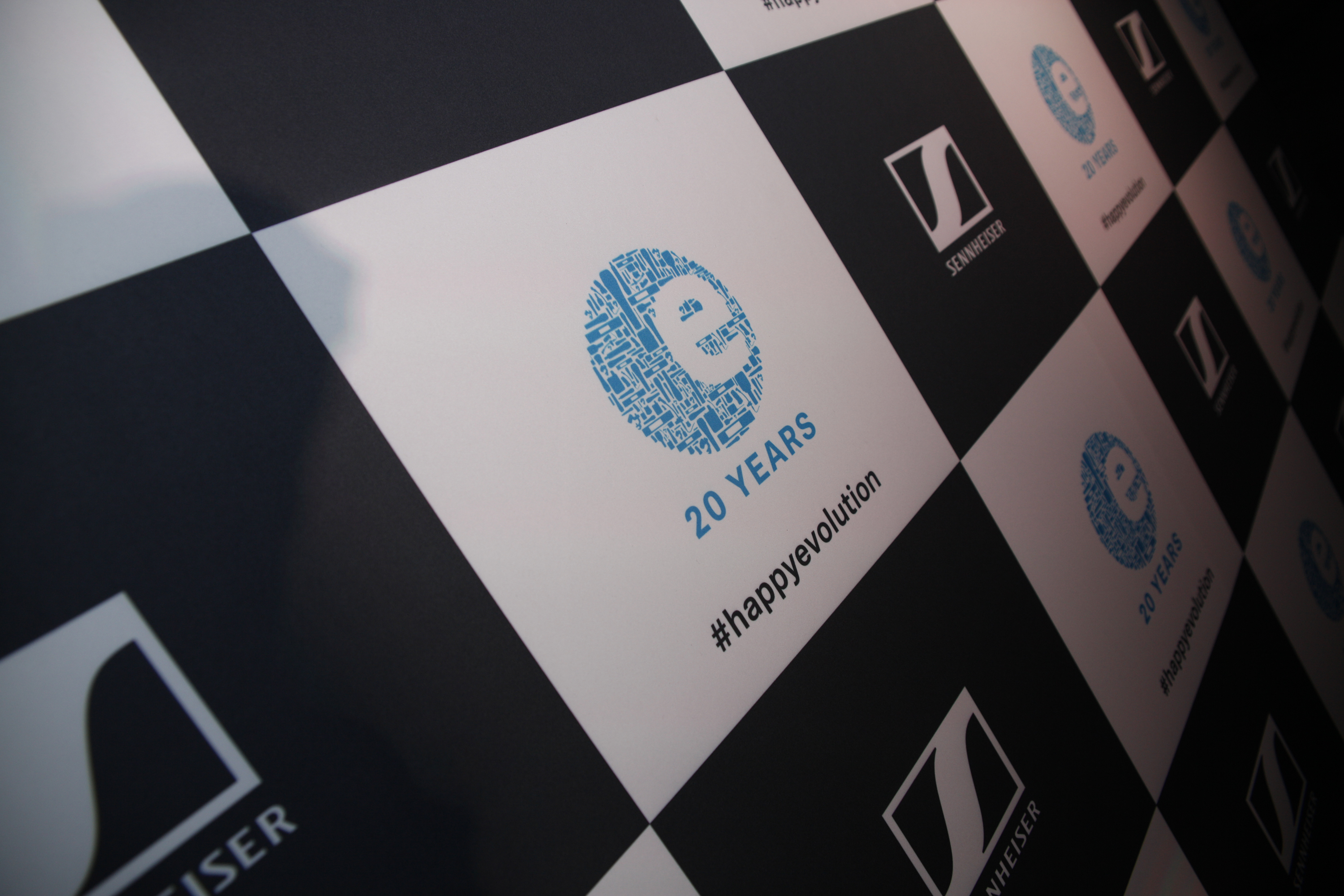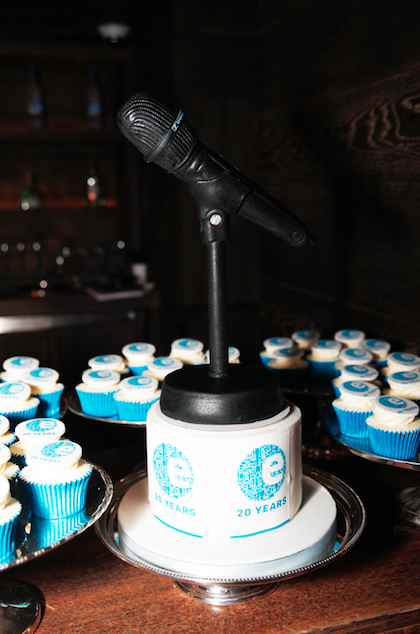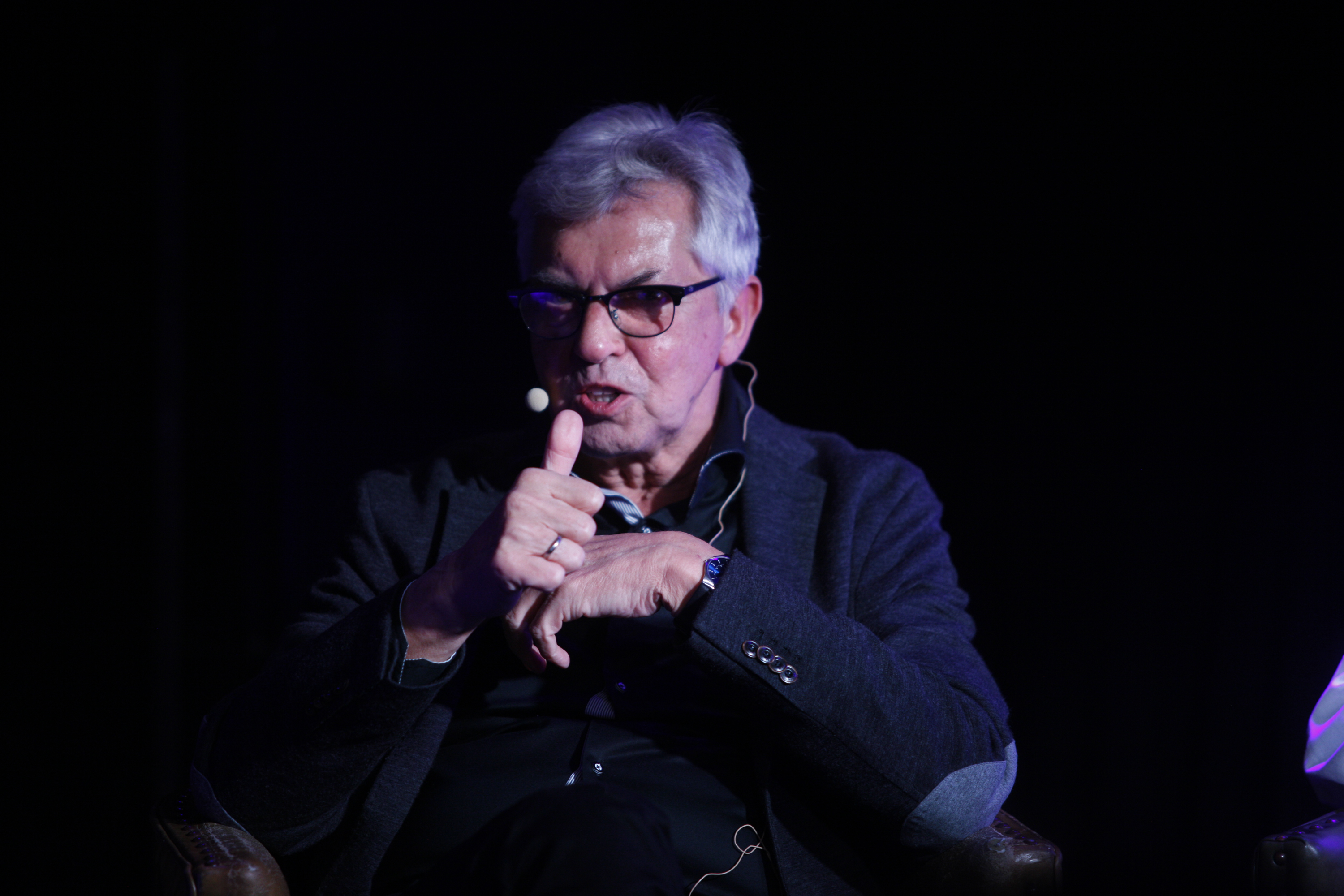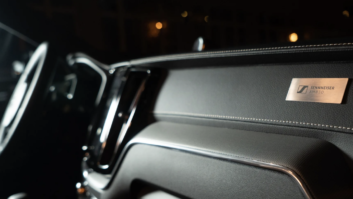
2018 marks the 20th anniversary of Sennheiser’s evolution microphone series, which – as described by the manufacturer – has become a “global industry standard” for live microphones and its best selling series to date.
The German family business, first formed in 1945 (as Labor W) is one of the world’s most established developers and manufacturers of microphones and headphones for the music and entertainment industries.

“Wherever people are passionately recording, transmitting or playing back sounds, Sennheiser is there,” the firm said in a statement.
Along the way, Sennheiser has been responsible for many technological milestones: the first shotgun microphone in the 1950s, open headphones in the 1960s, infrared transmission technology in the 1970s and multichannel wireless transmission in the 1980s. The 1990s saw the development of head-orientated surround systems, intelligent audio information systems appeared for the new millennium and today, the company continues to drive digitalisation of the audio world forwards.
And now, 2018 is characterised by the letter ’e’: This year, evolution, Sennheiser’s most successful microphone range ever, celebrates its 20th anniversary.
To celebrate and say ‘thank you’ to all the musicians, sound engineers, rental partners and content creators who have made evolution such a success, Sennheiser recently hosted an exclusive event of audio storytelling at the London EDITION Hotel in Fitzrovia, where stories about the evolution series were told by the people who were there.
Michael Polten, the former director, customer relationship management at Sennheiser, took to the stage to kick things off with a trip down memory.
“20 years ago, a question was posed: should Sennheiser continue to produce dynamic microphones? Our prices had gone up and our profit had gone down because we were producing them in a very old-fashioned and expensive way. Also, Sennheiser predominantly delivered microphones for the broadcast market, which weren’t attractive to the live sound market, partly because they were too expensive.
“So we had a dilemma: either go to a cheaper country, like China, to manufacture, or build an automated line in Germany that would reduce the time taken for the manufacturing process and reduce the cost. We decided to do the latter, but to make that viable, you need volume. This was calculated and it came out that we needed to produce 150,000 pieces a year to make an automatic production line profitable. I was asked to make a concept for that.
“So I worked out my 10 commandments: what it was necessary to fulfill to reach the new market. One of these commandments was to go the market’s very core, which at the time was the US and the UK. These were the two geographical regions where all the big touring companies were based, as pretty much all international tours came out of those countries.
“We put together an international team, finding specialists for the new market in our international sales force. This was the so-called Tiger Team and was founded in Los Angeles in 1996. This team then defined the new products, which were all wired mics.”

Question time:
Polton then joined guest hosted Jamie Gosney on stage for a Q&A. Gosney has worked in the pro audio industry for over four decades. He has toured with such artists as The Jackson Five, Dolly Parton and Donna Summer, owned and run recording studios and designed audio systems for prestigious venues including Glyndebourne, the Royal Opera House, and Bristol Hippodrome. But his real claim to fame is that he was the last person to mix Freddie Mercury live.
Did Sennheiser have any experience at all in lower cost, high volume products?
Michael: Well, yes, there was an attempt. Before evolution, Sennheiser introduced a microphone range called Blackfire. Blackfire was pretty successful in Europe, particularly in Germany – it was actually made in Germany for the German market – but it was never successful in the US. The launch of Blackfire was before I joined Sennheiser and was around the time of the black riots in LA, so the name was terrible for the US market and killed it there before it even started.
How did you approach the design and production of the evolution series differently from Blackfire?
Michael: The team we set up was the first step. It was the first time that an international team of sales people had defined a product. No engineers were involved at the concept stage.
When you say engineers, do you mean sound engineers or microphone designers?
Michael: People from the market were invited to define the product; the focus was on the customer and what was required by them.
We could have developed another microphone with the round silver basket which was synonymous with our main competitor, but that was not the Sennheiser way. We wanted to differentiate ourselves completely from our competition and introduce a range that would be synonymous with Sennheiser brand.
Producing the evolution range was a very important step for the company business-wise.
Given how big the project was and the investment needed, were there any objections to it from within the company?
Michael: Oh yes, definitely. Sennheiser was a broadcast company, so many people did not believe that we could achieve that kind of volume in a new market.
o were you able to meet the 150,000 target?
Michael: Yes we were! In the beginning, we had a lot of production problems. Even with careful planning and organisation, the delivery was still slow as we were getting used to producing the high volumes. Compared to our best-selling dynamic mics before evolution, of which we sold between 3 and 4,000 pieces per year, this was a massive new process to get used to. But, finally, after some initial hiccups, we were able to get on the right track, and we even managed to over-achieve our target to produce 200,000 per year!
How did the company establish itself as a successful brand in the live sound arena?
Michael: The success was down to the distribution network. For the dealer, it’s all about the margin point. Our competition was in a very comfortable position. For instance, they were already established in the market and could sell their mics at a very low dealer margin. To get to the dealers, Sennheiser knew it had to give them a better margin than the competition. This was the first step. The other was achieving market penetration. To achieve this, the sales team presented the microphones and did countless comparisons and demos.
Was there a particular time or event that took place that meant the market really sat up and took notice of these microphones and knew that they were serious competition to the brands that were already there?
Michael: Yes, when Elton John started using them. He was the first serious artist using evolution and this was one of the key turning points as he is a well-respected musician for musicians, so people always look to see what he’s using.
What else made it successful?
Michael: Investment from Sennheiser was key. We were in the lucky position that we could take longer to get into the market. Maybe after a year, other companies would have said there was no volume and would have given up. But Sennheiser invested in marketing and sales and had the budget and the time to able to be able to do this.
As I mentioned before, in the beginning, no one believed that we could achieve this kind of volume. Sennheiser was a broadcast company before evolution and my colleagues from that market were very skeptical.
The process was pretty unusual for Sennheiser; that the request came from sales and marketing. Until then, it was always the other way round.
Before evolution, we had high prices, low volume. This new series brought us down the pyramid slightly. This was the first range that was completely focussed on what the customer, the dealer, our own sales force and our marketing team wanted. These were the main points that made the evolution range so successful.
A short history of evolution
►1998: Sennheiser launches its evolution microphone series to the music market, covering artists’ every conceivable microphone need. The series includes the e825, e835 and e845 vocal microphones and the e602, e604, e608 and e609 instrument mics and proves a resounding success.
►In 1999evolution wireless follows, which remains Sennheiser’s most popular radio microphone series to date, fulfilling the needs of artists, musicians, speakers, videographers, corporate users.
►2000: The e 865 is launched as the first condenser microphone of the series. Sting and his sound engineer Vish Wadi helped in the fine-tuning of its sound.
►In 2003, Sennheiser launches the evolution 900 series with the e 935 and e 945 vocal microphones. Their great-sounding capsules contribute immensely to the success of the 900 series and, later, the MD 5235 and MD 9235 microphone heads.
2003 also sees the launch of the second generation of evolution wireless: G2 offers improved audio and RF properties, new user interfaces and a scan function, along with smaller bodypacks.
►2004: The range of evolution 900 series microphones is expanded with the e901, e902, e904, e 905, e906, e 908 and e 914 instrument microphones.
►With the new e965, Sennheiser introduces the flagship microphone of the evolution series and its first true condenser, large-diaphragm microphone in 2008. The e965 has a dual-diaphragm transducer and can be switched between cardioid and super-cardioid pick-up patterns.
►In 2009, Sennheiser launches evolution wireless G3. The third generation brings a new level of convenience to the wireless series, with features such as IR synchronization, Soundcheck mode, frequency coordination via the Wireless Systems Manager, wider audio range and interchangeable microphone heads for the hand-held transmitters –including the sound of evolution 900 capsules.
2011: Sennheiser is the first manufacturer to launch wireless microphone systems that transmit in the 1800MHz range. In response to the decision to close UHF frequencies from 790 to 862MHz for wireless microphones in Europe, the evolution wireless ew100G3-1G8 systems move to a higher frequency band that is reserved exclusively for wireless audio transmission in many European countries.
►2013: Sennheiser launches the evolution e835fx, which supports TC-Helicon vocal effects units.
►In 2015, Sennheiser launches evolution wireless D1, a series of radio microphones that lets bands go wireless the easy way with digital transmission in the 2.4 GHz range that is license-free worldwide.
►In the same year, the SL DI 4 XLR Dante interface makes all evolution wireless systems ready for integration into Dante audio-over-IP networks.
►2018: With the launch of G4, Sennheiser further improves and expands its most successful wireless microphone series.







